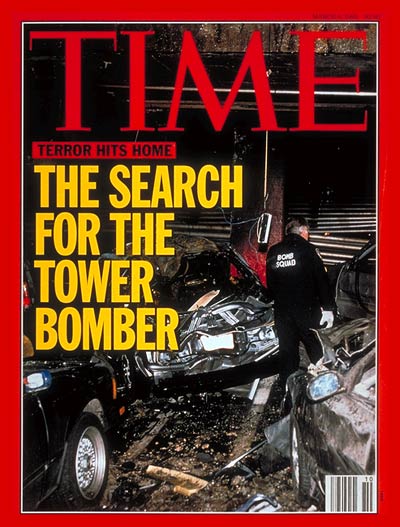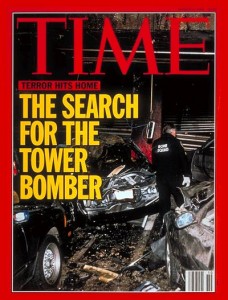Chasing the American Dream
by David Ndreca
[NOTE: Both the subject and the interviewer switch languages as per convenience, therefore, the transcript has been translated and appropriated.]
“Immigrants dreamed the same dreams that immigrants always have–of opportunity in America for themselves and their children” Brands writes in his American Dreams.[1]
In this short piece, I will introduce the story of Marcello Cardillo, an Italian immigrant who came to the United States in 1966 to chase the American Dream. The focus of my story is the description of Cardillo’s journey, which demonstrates the hardships and sacrifices an immigrant had to go through to get to the land of the free and opportunities. Not only will I describe his journey, but also the nature of his success and his consequent ability to help others, who, just like him, dreamed of America. This piece follows the spirit of Brands’ statement, supplementing it and giving it a more sensitive perspective.
In the late 1930’s, Marcello Cardillo’s father, Peppe Cardillo—a U.S. born citizen—was taken back to Italy by his parents and, he was never allowed to come to the U.S. again. In 1940 he was drafted to Africa.[2]Specifically, he was drafted in the Italian Eastern Africa (Africa Orientale Italiana), a complex of territories made up of ancient Italian colonial possessions of Somalia, the Eritrean Colony and the Ethiopian Empire.[3]During the war, Peppe lost a leg and was sent back to Italy. Unable to provide for his family, Peppe sent his young kids to work in the fields but it was not enough to feed a family of seven, with a sick mother and a disabled father.[4]Many Italians who emigrated to the United States during the 20s and 30s eventually returned to Italy, “a rarely noted fact that reveals a fundamental ambivalence about being in the United States.”[5]Known as “soujourners” or “economic opportunists” these immigrants came to the U.S. to make money and return home to buy land and open businesses.[6]
At the age of 16, Marcello Cardillo applied, along with his other two male siblings, for a U.S. visa, but it was denied since their uncle was an outspoken communist. Overtaken by desperation, Marcello, the youngest of them all, undertook a journey to Northern Italy, hoping to make it to Switzerland. In Milan, the young Cardillo had to spend the night under a bridge waiting for the seven o’clock bus to Zurich. He said “It was the end of September but I wasn’t cold, I didn’t feel it. I had six starving people at home and the simple idea that I could provide them with a piece of bread kept me going.”[7]
In Switzerland Cardillo was sheltered by farmers and was allowed to sleep in a barn. His hosts found him a job and also forced him to go to night school. “They told me that if I wanted to work, I had to go to school so I could do something better, perhaps find a job in the city.”Soon, Cardillo moved into a little apartment in Zurich, which was “expensive, but it was worth it” he said, “I could make double of what I made working in the farm, and I could send my family twice as much.”[8]
Two years had gone by, and it was time to go see his family. Cardillo had now purchased a car, a Fiat 600 Vignale Spyder, a car he could only afford without much sacrifice. “I was poor, I gave most of my money to my family, but I had saved a lot and now I could pass as middle-class kid, but I was nowhere close to being like [them].”[9]
While visiting his family at the age of 18, Cardillo got arrested for intentionally avoiding the draft. “The communists of the village had reported me, who else?” he stated, “poverty led people into committing evil actions against each other” he continued. Because of his family’s many connections, Cardillo was granted 24 hours to spend with his parents before he could be taken by the authorities and escorted to a military base. However, Cardillo decided to flee and with the help of his neighbor, a marshal of the Carabinieri (Italian police), he was escorted in the marshal’s car trunk to a train station in Rome. “You must cross the Lugano border tomorrow at 9:15, my brother’s shift starts exactly at 9. I will call him, tell him I sent you. He will help you cross the border” the marshal told Cardillo. Once arrived at his apartment in Zurich, Cardillo no longer felt safe and he knew it wouldn’t have been long before the police would find him. Cardillo shared his concerns with his family in New York, and his aunt promised that she’d help him leave Europe.
The Immigration and Nationality Act of 1965 abolished the Quota Acts which were based on national origins and opened the borders to people with skills needed in a developing American economy.[10]It’s 1966, just a year after the passing of the new immigration law. Cardillo’s aunt sought the help of Congresswoman Edna F. Kelly who, according to Cardillo, “called the U.S. consul in Zurich and arranged a work visa” for him (There is no evidence of such correspondence nor is Mr. Cardillo aware of the relationship between his aunt and the Representative Kelly).
Representative Edna Kelly was a Democrat from New York and had different roles in American politics; most importantly, she was known for her contributions to foreign affairs and women’s rights. Kelly served as the Chair of the Subcommittee on Europe and later as the third ranking member of the House Committee on Foreign Affairs.[11]Many Representatives, including Kelly, favored immigration reform. The House Immigration Committee took the issue of race and racial discrimination as legitimate grounds for supporting a new reform.[12]Most Congressman in support of the immigration reform “represented eastern European interests, either in their ethnically mixed regions, or in their own or biographies.”[13]
“The plane took off and I thought about that good-hearted woman (referring to Rep. Edna Kelly). I wouldn’t be on this plane without her, and without my aunt.” At the age of 20 Cardillo arrived to the United States and was not expecting what he saw. “It was dark and rainy but I couldn’t take my eyes off the high ceilings of the airport” he said. “I was asked my passport by a very tall officer. He asked me many questions to which I didn’t know how to answer, of course, but I do remember very well his big mustache.”[14]The American Dream turned to be a bit bittersweet: the demand for laborers was very high but Italian immigrants had socialist approaches to work organizations and were organized into mutual-aid societies. Italian Socialists provided leadership and protection to garment workers, barbers, and construction workers. The Italian Socialists also built a bridge between Italians and labor organizations such as the Knights of Labor or the Bricklayer’s, Mason’s and Plasterer’s International Union of America of which Cardillo was a part of.[15]
Once settled at his aunt’s house, Cardillo quickly started working as a construction laborer with his uncle but was unsatisfied with the attitude of his superiors. “Our bosses would give us the worst positions, the risky ones and many times they withheld a portion of our salaries to pay for the tools but in reality those filthy bastards were putting that money into their pockets” Cardillo stated.[16]In fact, immigrant workers took, and arguably still take, jobs with higher health and safety risks than native-born laborers. This phenomenon occurs because of the immigrants’ levels of education, language abilities, and different perceptions of job risks. Many immigrants obtained their work authorization directly through their employer and were tied to the company for an extended period of time. Undoubtedly, this leads to a system prone to exploitation but because of the aforementioned factors—particularly those immigrants whom immigration status depended on their employer—laborers did not seek for alternative employment or working rights out of fear of the consequences for them and their families.[17]
At 23 years-old Cardillo had just gotten married and wanted his family to live comfortably and still had parents and siblings to feed back in Italy. He said “I needed to do something, I was an angry young man that needed opportunities and not a [slave-like operated employment].” With the help of family and friends, Cardillo opened an Italian deli in downtown Brooklyn. There, he employed his wife Adele while he continued to work as a construction laborer. In two-year time, Marcello and Adele Cardillo saved enough money to buy a house in Yonkers, New York.[18]Italians were known for the many entrepreneurs and workers engaged in the manufacturing, construction and food businesses. Italians did not assimilate in America, but they created a cultural pluralism that allowed them to keep their Italian traditions and values while becoming good Americans.[19]
In 1983, Cardillo decided to sell his Italian deli and invest the earnings into a construction business. “It was a Sunday, I remember it because we had just returned from mass at St. John’s church. We sat down outside the fig tree and I [consulted] Adele whether or not we should sell our deli. She did not hesitate and supported my idea without any questions” Cardillo said. Within a few weeks Marcello opens his construction business called M & C, S & D Mason Contractors, Inc. and hires five laborers. It was a hard beginning working as subcontractors in Westchester County, NY, there was a lot of competition, and Cardillo’s English was very limited. However, only a few years later, Cardillo became one of the most renowned construction businessmen in the county. His projects quickly increased and were comprised from 50 to even 100 condominiums. “I did 50 condominiums for Jack Nicklaus. I know [him] very well, we don’t hangout anymore but I knew him very well” Cardillo proudly said. This business not only allowed him to chase his American Dream, but to help his employess do so as well. He made sure his they were protected by a union and partnered with the Bricklayer’s, Mason’s and Plasterer’s International Union of America, the oldest and still operating trade union in the United States. After 30 years in business, the union awarded him with a plaque of excellence in craftsmanship.[20]
After many years in business, Cardillo started supporting both politicians and people in need. He donated to humanitarian organizations and sponsored campaigns. He held beneficiary events and distributed food to the poor. “After 50 years working with immigrants, [Hispanics], people of color, with everybody, [I can say] for me, working people are all the same. America is the number one [compared to any other country] in the world. I am Italian but America is the number one for me. When you’re born in another country and you come to the United States you got to suffer a lot” Cardillo concluded.[21]
[1]H. W. Brands, American Dreams: The United States since 1945 (New York: Penguin Books, 2011), 384.
[2]Interview with Mr. Cardillo, March 17, 2018.
[3]Giuseppe Morandini, Enrico Cerulli, and Ugo Leone, “AFRICA ORIENTALE ITALIANA in “Enciclopedia Italiana”,” Treccani, , accessed April 28, 2018, http://www.treccani.it/enciclopedia/africa-orientale-italiana_res-13a6efa4-87e5-11dc-8e9d-0016357eee51_(Enciclopedia-Italiana)/.
[4]I Interview with Mr. Cardillo, March 28, 2018.
[5]Stephen S. Hall, “ITALIAN-AMERICANS COMING INTO THEIR OWN,” The New York Times, May 15, 1983, , accessed April 28, 2018, https://www.nytimes.com/1983/05/15/magazine/italian-americans-coming-into-their-own.html?pagewanted=all.
[6]Ibid
[7]Interview with Mr. Cardillo, April 24, 2018.
[8]Interview with Mr. Cardillo, April 4, 2018.
[9]Interview with Mr. Cardillo, March 17, 2018.
[10][10]H. W. Brands, American Dreams: The United States since 1945 (New York: Penguin Books, 2011), 371.
[11]“Kelly, Edna Flannery,” US House of Representatives: History, Art & Archives, Accessed April 28, 2018.http://history.house.gov/People/Detail/16168.
[12]http://eds.b.ebscohost.com/eds/pdfviewer/pdfviewer?vid=2&sid=e9f5d25d-9e01-4437-887e-4dac1b08ff44%40sessionmgr101page 58
[13]Ibid page 64
[14]Interview with Mr. Cardillo, April 24, 2018.
[15]Wang Xinyang, Economic opportunity, artisan leadership, and immigrant workers: Italian and Chiense immigrant workers in New York City, 18090-1980, (Labor History, 1996) 492-493.
[16]Interview with Mr. Cardillo, March 17, 2018.
[17]http://eds.b.ebscohost.com/eds/pdfviewer/pdfviewer?vid=1&sid=c33255e9-d7cc-420f-8aee-a4cec4dca146%40sessionmgr104page 142-143
[18]Interview with Mr. Cardillo, April 24, 2018.
[19]Mary Brown, Italians of the South Villages, report, ed. Rafaele Fierro (New York City, NY: Greenwich Village Society for Historic Preservation , 2007), 80, October 15, 2015, accessed April 28, 2018, gvshp.org/blog/2015/10/08/italians-of-the-south-village/
[20]Interview with Mr. Cardillo, April 4, 2018.
[21]I Interview with Mr. Cardillo, March 17, 2018.
–Video recording, Yonkers, NY March 17, 2018.
–Inteview, Yonkers, NY March 28, 2018.
–Phone Interview, April 4, 2018.
–Phone Interview, April 24, 2018.
Selected Transcript
– Video recording
[NOTE: Both the subject and the interviewer switch languages as per convenience, therefore, the use of certain terminology has been appropriated.]
[English]
Q. I know your father was a U.S. citizen. What happened to him?
A. My father was born in this country and then my grandpa [took him] back to Italy when he was 12 years-old. He never came back in this country because in 1930 [there was a draft to Africa]. In Africa, he lost his leg and never came back in this country.
Q. Where were you born? When did you come to the United States?
A. I was born in Italy, in the province of Rome, I left [the country] when I was sixteen years-old and went living in Switzerland. In Switzerland I used to go to school. During the day at work and at night I used to go to school. Then in 1966, I came to the United States to find my [wife]. I was 23 years-old when I met my wife, we got married and after a little while, in a year, we bought a house.
Q. How were you able to sustain your family and buy a house?
A. I used to work all over the place to make money. After three years, I bought my first store, an [Italian] deli. During the day, I would work at the construction site and at night at the deli.
[Translated from Italian]
Q. Were there any obstacles that hindered your business?
A. At the time, everything was managed by the mafia but I was never, I mean … How can I say it … A man from the mafia came to collect the “protection fee” but I told him I didn’t make enough money to pay for the protection.
[English]
Q. What happened afterwards?
A. After that, I closed the store and opened my [construction] business. I stayed in [the construction] business 33 years. I started with three foremen and ended up with 80, 90, 60. [All] union people, everyone used to be a [union man] and I was glad to be a union man and still am a union man, up to today.
[Translated from Italian]
Q. How big were your projects?
A. All the projects consisted of 50, 100, 80 condominiums depending on the various projects, but they were all new.
Q. I know you’ve worked for famous people.
A. Yes, I did 50 condominiums for Jack Nicklaus. I know [him] very well, we don’t hangout anymore but I knew him very well, we ate together… Then I know many political figures such as Nita Lowey (D-NY 17thDistrict), (former state) Senator Spano. I know many of these judges, they’re my friends because the have respected me as a [working] immigrant and I respect them for who they are.
[English]
Q. How did you engage with the community?
A. When I was 26, I started joining [various Italian clubs]. At first, [I joined the] Columbus League, named after Cristoforo Colombo, after that, I joined the Italian-American Organization. After two years, they made me the President of C.I.A.O. A lot of people did not like it because I was an immigrant, I don’t speak very well English. [Afterwards] I started [sponsoring] politicians, I started helping them, helping people and this is my story. After 50 years working with immigrants, any kind of people. I worked with immigrants, Spanish, people of color, with everybody. For me, working people are all the same. For me, America is the number one [compared to any other country]. I am Italian but America is the number one for me.When you’re born in another country and you come to the United States you got to suffer a lot.
[Translated from Italian]
Q. A bizarre question but would you go back to Italy?
A. No. Because I’m planted here and I no longer like the Italian [socio-political] environment. However, Italy is still Italy, it’s beautiful! When you spend your whole life abroad, it’s hard to get used to the Italian environment again.


